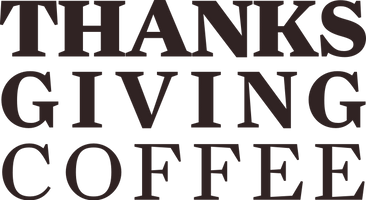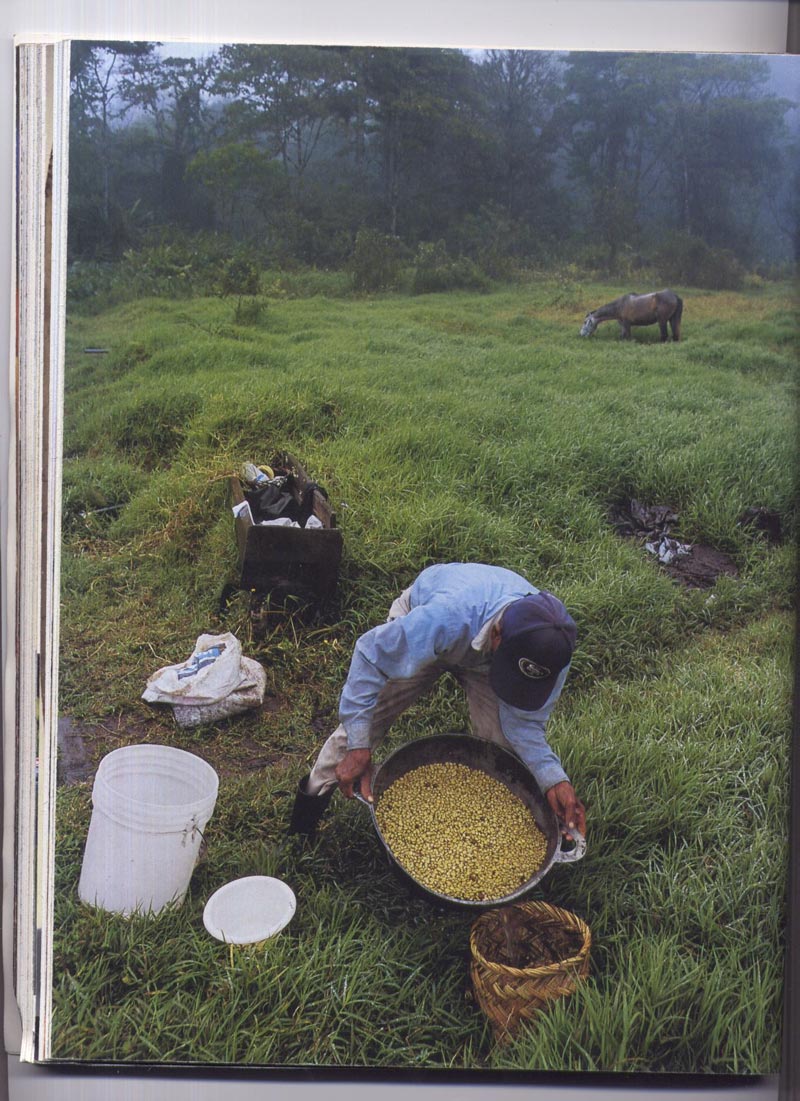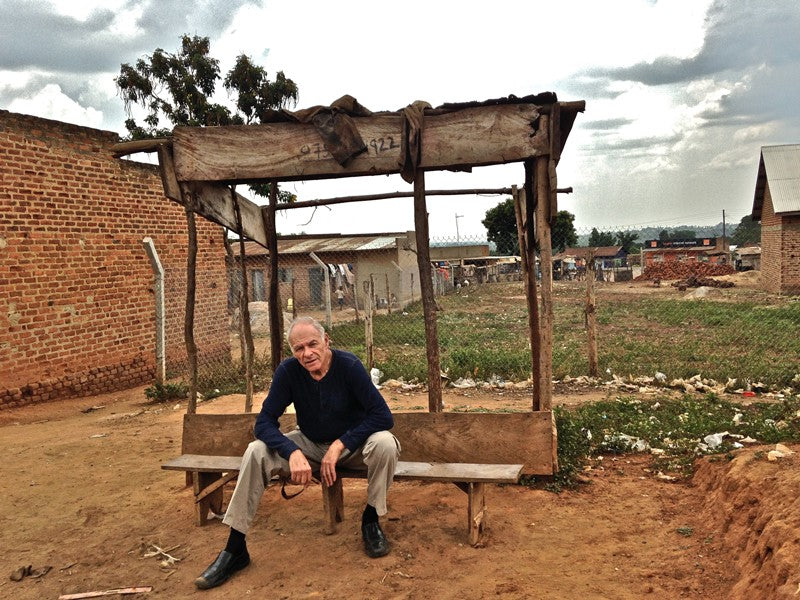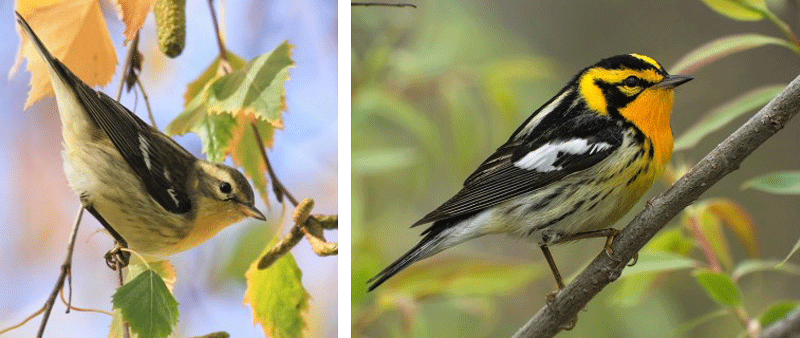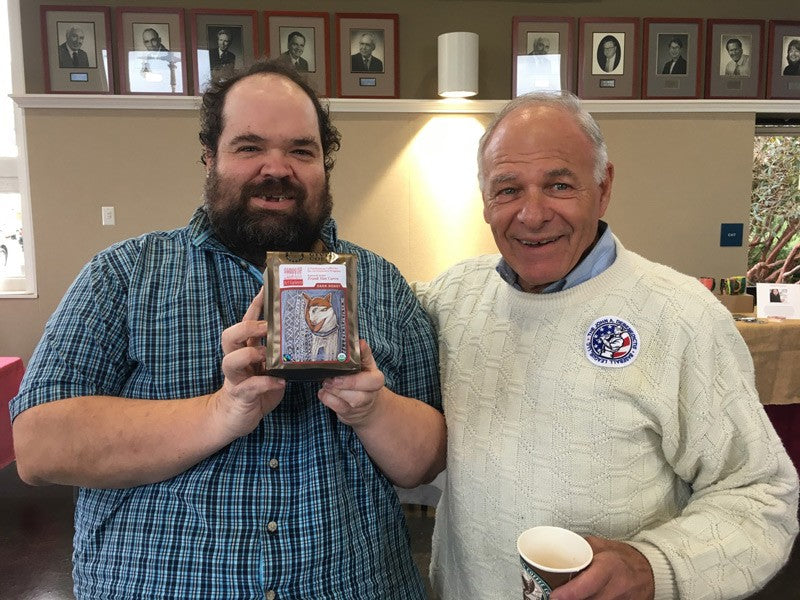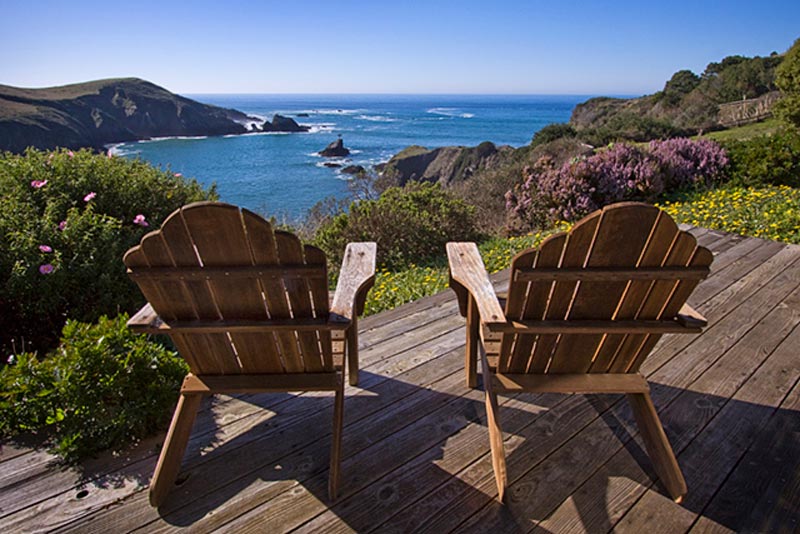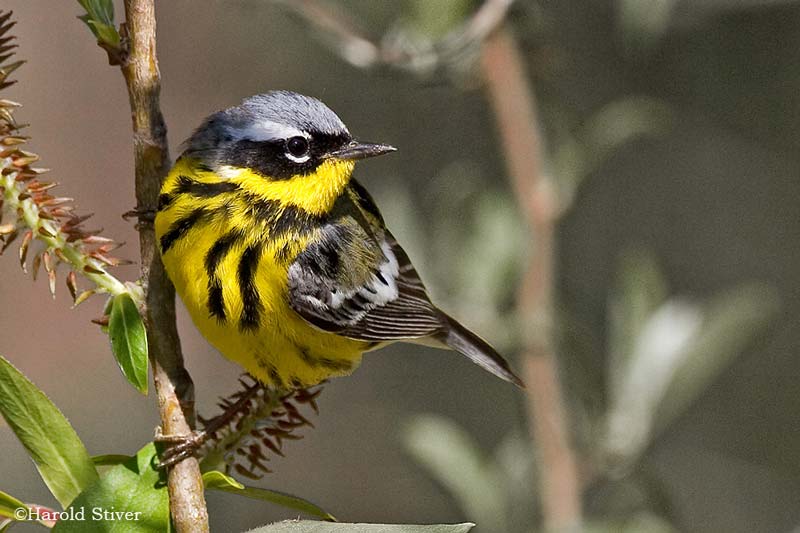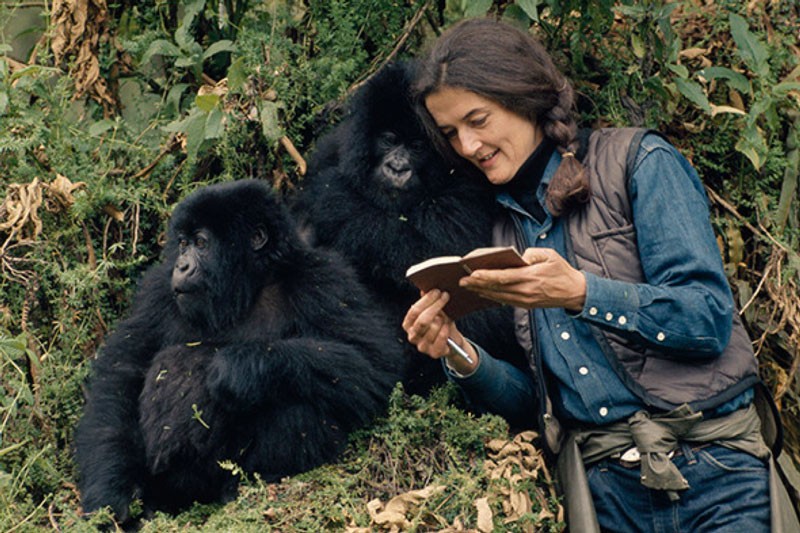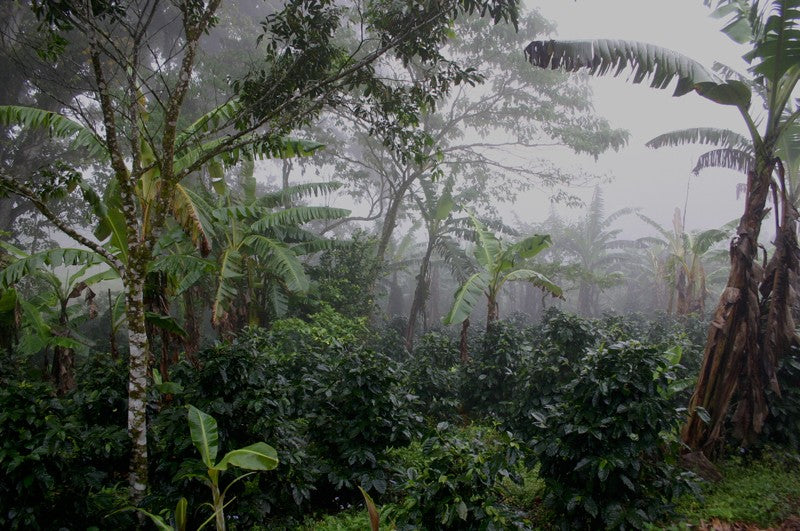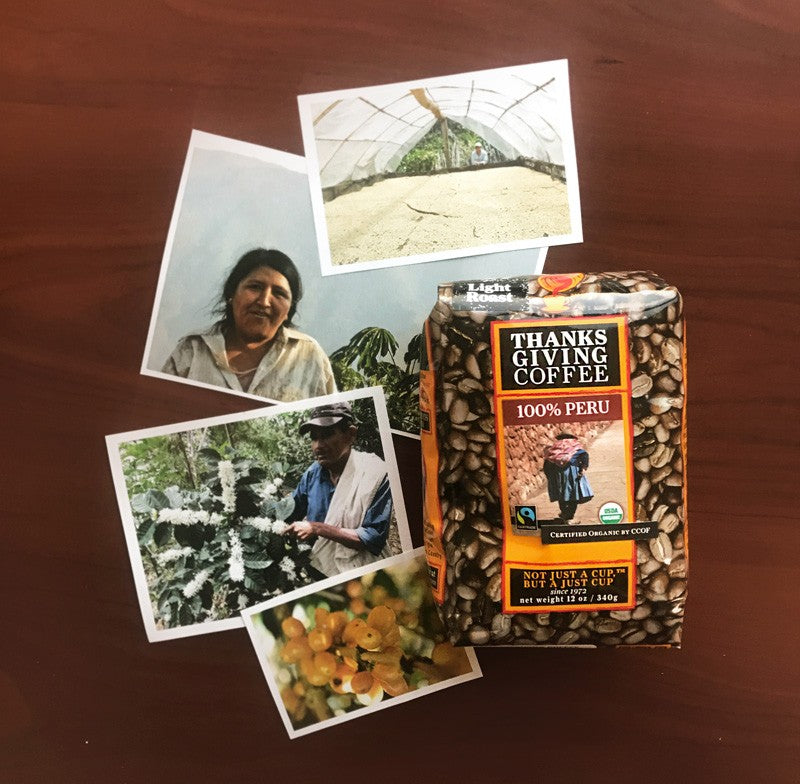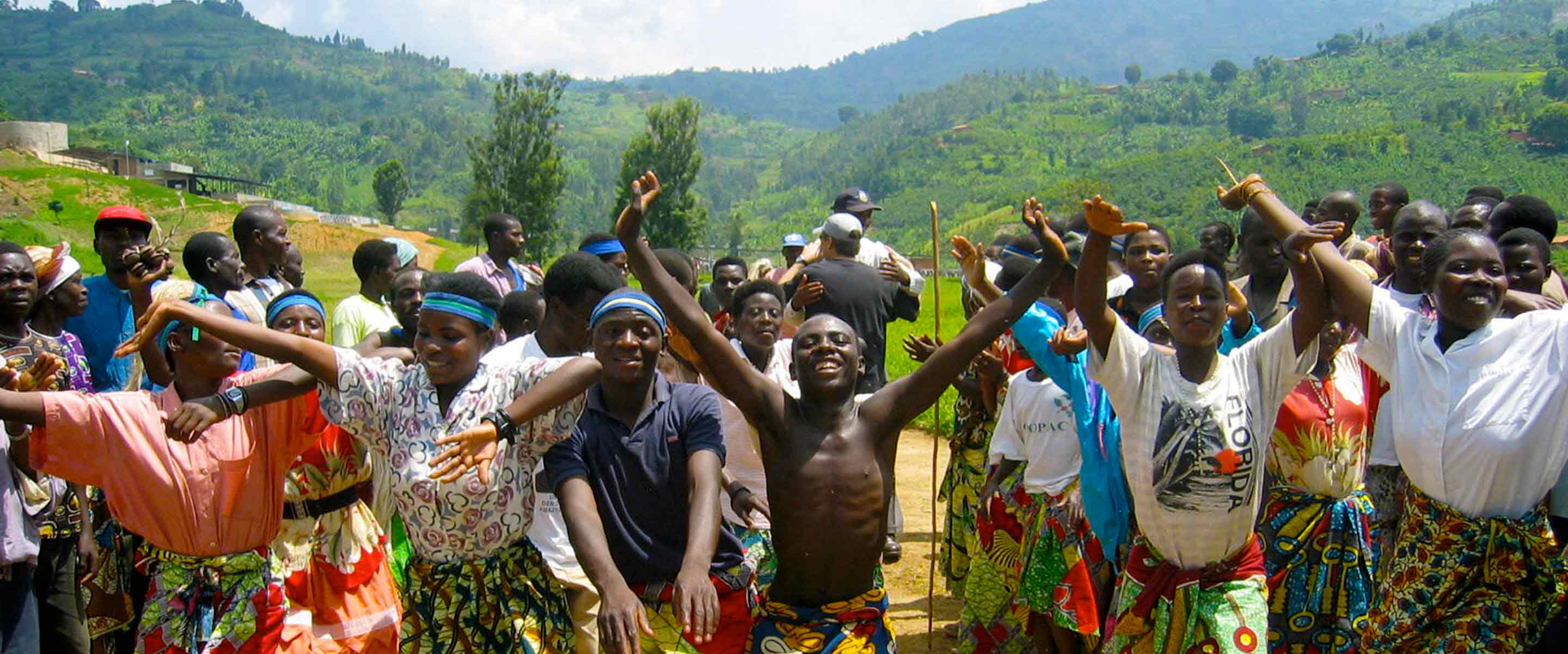
News, Stories and more
Our Blog
View BY :

BREWING COFFEE
Just like in our coffee grinding blog, there are some basics we have to go over first. So, before we get into how to brew your own “just cup”, let’s go over those basics. I’d also like to thank the many Thanksgiving employees who contributed info from past articles so that we could have this educational piece on brewing delicious coffee: Jacob Long, Marchelo Bresciani and Paul Katzeff.
1. Coffee to Water Ratio
“What? I’ve just been pouring copious amounts of grounds into a filter and adding a few cups of water.” I’d like to think we’ve all been there. At least I have, before I started working at Thanksgiving Coffee Company. But hopefully we caught you early enough to steer you in the right direction. 😉
Using the correct amount of coffee will ensure that your coffee is brewed to strength, without over-extracting or under-extracting the coffee to compensate for an inappropriate dose. While we do recommend weighing 2 grams of coffee for every fluid ounce of water, we understand that not everyone has a scale at home. And if you don’t, just estimate about 2 heaping tablespoons of ground coffee for every 5 ounces of water used to brew.

2. Grind Size (yes, this again)
This is one of the most important steps in coffee brewing. In general, a finer grind will produce a more intense brew and a coarser grind will produce a less intense brew. At the same time, a grind that is too fine will produce an over-extracted, astringent brew, and a grind that is too coarse will produce a weak, under-extracted brew lacking flavor. In pour-over methods, grind size also affects the rate of extraction, as water will pass more slowly through a finer grind, and more quickly through a coarser grind. We strongly recommend burr grinders over blade grinders. For more information on this, see our last blog “How to Grind Coffee“.

3. Water Temperature + Quality
This one is a little bit more straight-forward. Water temperature dramatically affects the extraction of coffee’s flavor during brewing. We recommend brewing with water at 200° Fahrenheit for best results. Using fresh, clean, chlorine-free water is essential.

4. Coffee Freshness and Storage
Coffee is very sensitive to heat, moisture, and oxygen. It should be stored at room temperature in an airtight container. For best results, grind coffee fresh, just before brewing.
Staling is caused, in order of most harmful to least harmful
- Exposure to air (Oxidization)
- Exposure to heat
- Exposure to moisture
- Exposure to light
…and, if you address the problems of Air, Heat, and Moisture correctly, then Light will have little effect on your coffee. Read more about storing your coffee here.

5. Cleaning
This is the last one – of the basics – and it’s pretty easy. Because coffee contains numerous oils that build up over time, we recommend thoroughly cleaning your brewing and grinding equipment after each use. This guarantees the best, freshest cup of coffee every time.

So… we covered all the basics. I know it’s a lot, but we still have all of the brewing methods to cover from stovetop espresso to cold brewing. Stay tuned for part two, and we’ll help you discover which method is best for you and why.
Coffee Tips : How to Brew Coffee - Part I
BREWING COFFEE Just like in our coff...
read more-
![Smithsonian Magazine Feature – June 2004]()
Smithsonian Magazine Feature – June 2004
We’ve been digging into the archives a little bit, and came across this article from June of 2004. As Earth Day rolls around, check out this article from Smithsonian Magazine featuring Thanksgiving Coffee Company and our work in Nicaragua.
Read the article on the Smithsonian Magazine website.
Smithsonian Magazine Feature – June 2004
read more -
![Cold Brew Coffee]()
Cold Brew Coffee
Versatile, Healthy, Easy
In addition to being simply the best summertime drink, cold brew coffee has the distinct advantage of allowing you to taste more subtle notes in coffee than its hot-brewed counterpart. Some of the delicate tones in coffee can become masked in a hot drink.
The taste of coffee comes down to the chemistry of the brewing process. When you expose coffee grounds to hot water, they release oils. These oils are full of acidic compounds that won’t dissolve at lower temperatures. The bite of those compounds anesthetizes the tongue and prevents you from noticing the coffee’s flavor. The acidity can be nice in hot coffee, but for cold drinks, it’s a decided drawback.
Steep in Hopland serves up Thanksgiving Coffee Cold Brew on a daily basis. Below is a shot of one of their customers’ favorite drinks!

Studies have shown that cold brew coffee is 67% less acidic than coffee brewed hot. The burnt flavor is eliminated from a coffee that is cold-brewed. The other upside of not having that acidic taste is that it’s healthier for both your stomach and your teeth.
And since cold brew coffee has never been subjected to heat, the chemistry of it doesn’t change. Hot coffee’s chemistry changes as it cools. Your day-old cold brew won’t taste stale, like a cup of day-old hot-brewed coffee certainly will. Caffe Etc in Hollywood serves Thanksgiving Coffee’s cold brew in 24oz portions to their morning customers. These people take their coffee with them to work, and save half of it in the fridge to consume later. There is no deterioration, and no second trip to the coffee shop this way!
Below is a shot from Caffe Etc in Los Angeles.
Many people will argue that cold brew coffee simply tastes better. Undertones of chocolate, fruit, and nuts dance on the tastebuds more obviously with cold-brewed coffee. Our own preferences for cold brew here at Thanksgiving are single origin coffees, but some of our customers have used our Grey Whale Blend, and even our high caffeine Pony Express in their cold brew explorations. To find your preferred taste, experimentation is important – and cold brew is forgiving enough to allow that. You may even find that your tastes are seasonal.
As we experiment with our coffee for cold brew ourselves, we’d love to hear what your favorite cold brew coffees are! Share with us using our contact page, or on social media.
Another good thing about cold brew: It’s versatile. If you like your coffee hot, just add boiling water to the cold brew concentrate. Voila! Fresh hot coffee without the acid bite. If you’ve perfected your cold brew mix, but don’t want to dilute your drink with ice, freeze the mixture and use coffee ice-cubes. This way the mixture won’t get weaker as it melts – perfect for a picnic or a day on the beach. But here’s something to remember, though:. Ice cubes often pick up taste from the other things in your freezer,so be careful you don’t introduce off-flavors.
For our final little tidbit: A lot of recipes may avoid using coffee as an ingredient because of its acidity, but cold brew coffee, with its lowered acid content can be great for baking or marinating. Also, you can consider using cold brew in cocktails. Experiment with everything! You may discover your perfect cold brew libation. And if you do, let us know about it.
How to Cold Brew Coffee
Cold brewing coffee is easy, it’s fun, and it basically becomes a necessity as we head into summer. And we’re here to answer any questions you might have about how it works.
Lawrence Bullock
Thanksgiving Coffee CompanyCold Brew Coffee
read more -
![Micro-Lot Coffee]()
Micro-Lot Coffee
The world is lush with coffee growing regions, and inside those regions are thousands of small-scale coffee farmers, growing coffee in hundreds of different micro-climates and soil types. This is where we find the “micro-lot.”
Together with dozens of varietals (air, shade, wind, sun, rain, soil type, etc.), the coffee flavor is created in all its possibilities.
We have been in the coffee game for over forty years, and know the territory well, from Papua New Guinea to Nicaragua.
We know the farmers and they know us. Together we find these small, exceptional “micro-lots” produced by individual farms in quantities of no more than 10-20 sacks (1500-3000 pounds).
We pay the farmer a premium, and everyone involved is happy that a rare and quality coffee did not get lost in the crowd of good and quality coffee.
When the coffee finally arrives at Thanksgiving Coffee Company, our Roastmaster Jacob Long roasts the coffee 3-5 pounds at a time, using his knowledge to bring out the magic from each bean.
So when you see Thanksgiving Coffee offering a micro-lot coffee, you can be certain that you’re purchasing one hell of a great coffee.
– Paul Katzeff

Micro-Lot Coffee
read more -
![Seismic Joint at the Exploratorium]()
Seismic Joint at the Exploratorium
San Francisco’s Exploratorium is one of the great gems of the bay area. The exhibits inside Pier 15 will keep you and your family enthralled for hours on end. But before walking through those doors, it’s always a good idea to get caffeinated.
And we have just the place.
Seismic Joint Cafe
In the same building as the Exploratorium is the Seismic Joint Cafe at Pier 15. This little coffee shop is the perfect pit stop before (or after, or during!) your visit to the Exploratorium. Grab a cup of the I Love Curiosity Blend, roasted by Thanksgiving Coffee! This coffee was grown in Nicaragua and Rwanda, and roasted along California’s North Coast.
The Exploratorium
The Exploratorium isn’t just a museum; it’s an ongoing exploration of science, art and human perception. Learn more about them in this quote from their website:
Located in San Francisco, California, the Exploratorium is a public learning laboratory exploring the world through science, art, and human perception. Our mission is to create inquiry-based experiences that transform learning worldwide. The vision is a world where people think for themselves and can confidently ask questions, question answers, and understand the world around them. We value lifelong learning and teaching, curiosity and inquiry, our community, iteration and evidence, integrity and authenticity, sustainability, and inclusion and respect.
The Exploratorium creates tools and experiences that help you to become an active explorer: hundreds of explore-for-yourself exhibits, a website with over 50,000 pages of content, film screenings, evening art and science events for adults, plus much more. We also create professional development programs for educators, and are at the forefront of changing the way science is taught. We share our exhibits and expertise with museums worldwide.
Enjoy your trip to the Exploratorium, and don’t miss out on a cup of Thanksgiving Coffee, right there on Pier 15!
Seismic Joint at the Exploratorium
read more -
![For the Birds: Blackburnian Warbler]()
For the Birds: Blackburnian Warbler
For the Birds is a blog series from Thanksgiving Coffee Company, highlighting one of the 200 Neotropical migratory birds who rely on shade grown coffee during their winter migration. In January, we featured the Cedar Waxwing, in February, the Magnolia Warbler, this month we’re focusing on the Blackburnian Warbler – the bird featured on our dark roast Songbird coffee.
Blackburnian Warbler
Songbird Coffee Dark Roast from Colombia
With their bright colors and trilling songs, it’s no surprise that a group or flock of vibrant warblers is often called a ‘bouquet’. However, one of the most striking members of the warbler family would rather not join the bunch.
Common along the eastern region of the United States during their migration, the Blackburnian warbler can be easily identified as the only orange-throated warbler in North America. Named after botanist Anna Blackburn, the Blackburnian warbler is territorial on its breeding grounds, solitary in the winter, and only forms flocks during migration. In fact, this little bird is such a loner that even though both parents feed and care for the chicks, the parents separate when the young are old enough to fledge and leave the nest, each taking part of the brood with them.
But even the most solitary parent needs the support of a group every once in a while. After going their separate ways, the parents will sometimes join foraging flocks of kinglets and nuthatches with their begging young, the cries of which have been known to also attract chickadees.
 <
<
Of the over 50 species of New World warblers to be found in North America, perhaps it is the colorful Blackburnian that stands out as a lone bloom, refusing to join the colorful assemblage of other warblers.
Help protect the winter habitat of Blackburnian warblers by buying SMBC Song Bird Colombian dark roast shade-grown coffee.
Dark Roast Colombian Coffee
Toasted • Spicy • Dark Chocolate
A rich coffee with flavors of toasted nut and dark chocolate followed by a smooth lasting finish, making this a clear winner for dark roast coffee enthusiasts.
For the Birds: Blackburnian Warbler
read more -
![Raising a Mug to Support the Art Explorers]()
Raising a Mug to Support the Art Explorers

Frank Van Curen, Art Explorer and Paul Katzeff, CEO of Thanksgiving Coffee
“I love doing art because until recently I had never done it before. It makes me feel really good. It makes me happy because I love learning new things.”
“Doing art calms me down. I feel happy while I’m planning a design and working on my pictures.”
“Art makes me feel calm…art makes life better.”
“When I do my art I feel calm and like I’m experiencing what I think in my mind and throwing it onto the paper. The colors came from my brain and from nature. God gave me my talent and a giant heart that can love and do art and do other things.”
“Art is both relaxing and exciting. It makes me feel good about myself.”
“I like to spend a long time working on my portraits, often for weeks, even months. Sometimes I wake up in the night and plan what I’m going to do when I get to Art Explorers.” Frank Van Curen
“Art makes me feel calm…art makes life better.”
If you haven’t taken the time to stop by and meet the artists at the Art Explorers Studio and Gallery, then you are missing out on one of the great hidden treasures of downtown Fort Bragg.
Art Explorers has been supporting artists with mental disabilities since 1996, providing a safe space for them to express themselves and find peace of mind with the stoke of a paint brush.
Last weekend, the Art Explorers celebrated a new ceramics show in Town Hall in collaboration with their artist in residence, Sabine Brunner of the Little Cup ceramics studio. A departure from their usual work, the artists got to enjoy expressing themselves in ceramics with hand made sculptures and painted mugs. And what goes perfectly with a new, one of a kind hand painted mug? Why, a fresh cup of coffee of course! Which is why the event also debuted a new fundraiser for the Art Explorers program: Thanksgiving Coffee.
Showcasing the artwork of 5 current Art Explorers, each bag label shares the story of the artist who created it. As the program grows, the work of more artists will have the opportunity to grace the front labels, highlighting the incredible talent of our local artists.
Packages of Art Explorers Coffee, dark roast and decaf, are currently available for purchase at the studio, online, or at special events. Each bag sold supports the artists and staff members of the Art Explorers program, and with 5 different labels to choose from, you’ll want to collect them all!
So take the time to stop on by the studio at 305 E. Redwood Ave (Tues. Thurs. + Fri. 9:00am – 3:00pm, Saturday 12:00pm – 3:00pm) and meet the artists, maybe buy a painting or some greeting cards, and pick up a bag of truly beautiful and one of a kind Art Explorers Coffee.
Learn more: www.artexplorers.org
Raising a Mug to Support the Art Explorers
read more -
![MacCallum House]()
MacCallum House
The MacCallum House is a cornerstone of the village of Mendocino. This gorgeous Victorian home once housed the most prominent family of the Mendocino Coast, and now houses the #1 rated hotel in the village of Mendocino, according to Tripadvisor!
 <
<
This stunning building sits tall on Albion Street, looking over the houses and water towers, with views of the bay below. The house is surrounded by one of the most stunning gardens in the village, begun by Daisy MacCallum herself in the late 1800s. Daisy was an early member of the American Rose Society, and her passion for gardening is still evident on the MacCallum House grounds today. The restaurant often serves produce grown in their own Chef’s Garden.
 <
<
The MacCallum House is a landmark of Mendocino, and the favorite hotel for many of the tourists that visit our area. The Mendocino Coast would not exist as it does today had it not been for Daisy MacCallum’s family, and their prominence in the community made this area what it is today!
These days, the property has a restaurant, bar, hotel, a community hot tub, a greenhouse, and two floors of suites above the first floor cafe. We are delighted to be working with such an amazing partner, to participate in the history that this property offers.
Thanksgiving Coffee and the MacCallum House
The MacCallum House was originally completed in 1882, and became a bed and breakfast almost a century later in 1974. Thanksgiving Coffee became one of their first vendors in 1975 – providing coffee for the guests of the inn, and later the restaurant itself.
 <
<
We created a special blend for guests of the MacCallum House, and now sell this unique coffee on our own website:
The MacCallum House Blend is full-bodied with dark chocolate overtones and a finish of sweet spices. This coffee is grown in the mountains of northern Nicaragua, surrounded by mango, guava trees, and avocados.
The gorgeous Victorian-style craftsmanship of the MacCallum House graces the label of this organic blend, so every time you reach for your bag of coffee in the morning, you’ll be reminded of the stunning Mendocino Coast.
During the month of March, our MacCallum House Blend is 20% off as our Monthly Special! Usually $14.50, you can purchase a 12oz bag for only $11.60 until April.
“In 1971 when I first arrived on the Mendocino Coast, Daisy MacCallum had just been moved to a nursing home. I would sneak into the MacCallum House and climb to the attic to read 100 year old books and journals – and imagine myself living back in the early days of Mendocino.”
Paul Katzeff, Co-Founder and CEO
MacCallum House
read more -
![Albion River Inn]()
Albion River Inn
Along the Mendocino Coast, we are lucky to have some of the most picturesque views in the world. From the stunning sunsets at Point Cabrillo Lighthouse, to the trails and forests in the Mendocino Woodlands: our coastline is a sight to behold.
In addition to our stunning views, we are lucky enough to have some truly magnificent restaurants and hotels – and one in particular has been a mainstay of the Mendocino Coast.
 <
<
Albion River Inn has been operating for over 35 years, and even before that was a successful restaurant. Located on some of the most beautiful property in Albion, any family who gets the chance to view a sunset from the grounds will never forget it. Sometimes it rains, but we promise – it’s still stunning.
This facility has been featured in countless publications, including Sunset Magazine and Wine Spectator. With only 22 rooms, the Albion River Inn is often difficult to book – but always worth the wait.
 <
<
Albion River Inn Restaurant
The restaurant on the Albion River Inn property uses ingredients grown and caught locally, and specializes in some of the best seafood you’ll find along the North Coast. A fun tidbit about the restaurant building: it was built out of wood salvaged from the Girlie Mahoney shipwreck, from 1919! This restaurant has won Wine Spectator’s Award of Excellence on nineteen different occasions, thanks to the great Chef Stephen Smith, and sommelier Mark Bowery.
 <
<
Thanksgiving Coffee and the Albion River Inn
The Albion River Inn Restaurant serves Thanksgiving Coffee, and has done so for the entirety of its existence. We worked with the restaurant and inn to create an organic blend unique to their brand. The Albion River Inn Blend is consistently a top-seller on our website, and those who enjoy it at the Inn are consistently impressed with the flavors presented in the dark roast.
A full-bodied and well-rounded blend with sweet chocolate tones and a crisp, toasty flavor, our Organic blend is grown high in the mountains of northern Nicaragua. Its rich complex flavor is a delightful reminder of the Albion River Inn and California’s magnificent North Coast.
 <
<
This unique coffee is 20% off during the month of March, and is a coffee you’ll likely order again and again. This coffee is one of our bestsellers, and has never been on sale before now! Snag a bag or two online for your next morning cup of coffee, and be sure to stop by for a meal next time you’re near the Albion River Inn.
“Before it became the Albion River Inn, it was a rickety old dance hall that the hippies commandeered back in the day to dance to psychedelic music. The floor shook and being so close to the edge of the cliff, overlooking the shore 60ft below – I thought it might just fall into the ocean. That was back in the early 70’s.”
– Paul Katzeff, Co-Founder and CEO
Albion River Inn
read more -
![Congo Coffee for the Dian Fossey Gorilla Fund International]()
The Incredible Story of a War-Torn Region Redeemed by the Coffee Bean
 <
<
The Democratic Republic of Congo is in the heart of central Africa and considered to be the most bio-diverse country in the entire continent, which is quite a distinction. Iconic African wildlife such as jungle elephants and white rhino roam throughout the four national parks, and it is one of the few places on Earth that many great ape species, such as gorilla, chimpanzee and bonobo, call home. Its lush forests and equatorial climate means that the DRC is also an excellent region for growing some of the best sweet Bourbon varietals of coffee trees in the world.
 <
<
But despite the country’s wealth of natural resources, decades of war, genocide, and political unrest has condemned many of the 68 million civilians to lives of poverty, disease and violence.
The lack of businesses and income-generating activity pushed the DRC into deeper turmoil and left the once productive coffee sector neglected or abandoned. Most of the coffee farmers could no longer bring their harvest to market and fled the region, while others resorted to smuggling their beans into Rwanda in hopes to barter for food and supplies. So near, and yet so far: smuggling coffee is very dangerous and many people have lost their lives in the attempt.
Due to these circumstances, the small amount of coffee still produced in DRC was coming from small farms with old or rudimentary equipment and no access to international markets. All of that changed when Joachim Munganga founded the now-famous SOPACDI co-op.
Congo Coffee Farm
SOPACDI (Solidarité Paysanne pour la Promotion des Actions Café et Développement Intégral) was created by Joachim Munganga in 2002, as a means to bridge the ethnic strife of the region in order to tap into the international specialty coffee market. The co-op is located on the shores of Lake Kivu, which straddles the border between the DRC on the west bank and Rwanda to the east. Joachim started with his own farm and worked to rehabilitate an old, rundown estate with a central washing station for the co-op to process coffee. It wasn’t until 2008, when SOPACDI joined forces with the UK’s Twin Trading Company, that the doors to the international coffee market were opened wide. Together, they designed and obtained funding for a program to assist them with business skills and to begin rehabilitating the farms and improving the infrastructure, which included spearheading the construction of the first new central coffee washing station to be built in the country in over 40 years.
Since then, SOPACDI has grown to include over 5,200 farmers, 20% of whom are women. In a region infamous for rampant sexual violence, SOPACDI has been a leader in promoting gender equality and supporting the widows of those farmers who died trying to smuggle their beans into Rwanda. In addition to the revitalizing their lost coffee economy, SOPACDI has earned the distinction of being the first certified fair-trade co-op in the DRC and was also named 2014 Sustainability Award Recipient from the Specialty Coffee Association of America. They even hosted the DRC’s first internationally recognized coffee cupping competition, Saveur du Kivu, in 2015.
Economic stability saves lives, and not just human ones. Poor economic conditions result in the rise of eating and selling bushmeat, further endangering the sensitive wildlife of the DRC. As the animals are hunted, their numbers drop and they retreat deeper into the dense jungle. As logging companies and farmers clear away the forests at an alarming rate, they provide poachers an even greater access to hunt. That is, of course, unless the forest and the animals who live there can become a better economic resource to the people of DRC as a sustainable living ecosystem. Such is the hope of shade-grown coffee.
Coffee trees love the shade and they naturally thrive under a jungle canopy. Many coffee farmers additionally supplement their resources by growing shade-loving food crops, such as banana and avocado, along side their coffee trees, all within the natural infrastructure of the forest. By weaving the livelihood of the farmers into the success of a thriving jungle ecosystem, we are simultaneously supporting sustainable commercial goods and conservation.
 <
<
Specialty Coffee Saves Gorillas
Grauer’s gorillas are the world’s largest ape and only found in the Democratic Republic of Congo. Over the last two decades their population has plummeted by an estimated 80 percent, which is why the Dian Fossey Gorilla Fund International has set up a program to help save them based on their success working with mountain gorilla populations in Rwanda. These efforts include daily protection and monitoring, tracking the gorilla groups, scientific research, data collection, local education programs, and community engagement.
 <
<
By employing the local Congolese people to protect the gorillas, the Dian Fossey Gorilla Fund International is helping to foster a love for these creatures within the community while also creating an economic benefit. They now operate a permanent research and conservation field station in the core of Grauer’s gorilla range, working closely with traditional landowners and other local partners to help ensure the future of the species and countless others at risk in DRC.
Thanksgiving Coffee is proud to support the economic renewal of the DRC by partnering with SOPACDI to bring you Grauer’s Gorilla Congo Coffee. Not only does the purchase of this coffee promote the livelihoods of the SOPACDI farmers, but a percentage of all online sales benefit the Dian Fossey Gorilla Fund International and their continuing efforts to conserve and study the great apes of the DRC.
Coffee changes the world, but it is quite possible that there is nowhere on Earth more profoundly impacted by the humble coffee bean than the Democratic Republic of Congo is right now. Together, we can all do our part to help stabilize this unique ecological treasure for future generations to enjoy by simply enjoying a good cup of coffee.
Congo Coffee for the Dian Fossey Gorilla Fund International
read more -
![Fair Trade: A Movement for All]()
Fair Trade: A Movement for All
The following is an excerpt from a post from our fair trade certification: Fairtrade International:
True fair trade is about mutually beneficial relationships rooted in trust and respect spanning geographic and cultural boundaries.
As a global movement, fair trade brings attention to people around the world who work under exploitative conditions and highlights the true costs of goods in global supply chains. Organizations and activists, businesses and brands, farmers, workers and artisans have diligently worked for more than 40 years to bring greater balance to the terms of trade.
In recent months, we have watched as the term ‘fair trade’ has been grossly misused by politicians to energize their supporters while vilifying others. We have seen the term used to exclude people and encourage an isolationist agenda. These ideas stand in direct opposition to the concepts of justice and inclusivity that underlie our movement.
For far too long, conventional trade has maintained a narrow focus on the lowest common denominator. Efficiency at all costs, lower prices, and little consideration for the full social, economic and environmental impacts have been hallmarks of conventional international trade. Massive consolidation of power in supply chains has resulted in fewer options for consumers, farmers and workers, and unprecedented wealth controlled by few. Oxfam’s recent report on global inequality revealed that just eight men control more wealth than the world’s 3.6 billion poorest people combined.
IF WE HOPE FOR A SOCIETY – IN THE U.S. AND AROUND THE WORLD – THAT IS MORE EQUAL AND JUST, WE MUST PRESS TRADE INTO THE SERVICE OF PEOPLE.
Global trade and the trade deals that accompany it are not inherently bad. They provide an opportunity to deliver the benefits of trade more broadly, but only if they are used for that purpose. Fair trade, with its focus on inclusion and empowerment, shows that trade can – and must – be more equitable.
If we hope for a society – in the U.S. and around the world – that is more equal and just, we must press trade into the service of people.
True fair trade creates shared value throughout supply chains.
True fair trade promotes openness and transparency.
True fair trade respects human rights.
True fair trade supports diversity.
We support trade that is truly equitable for all, including artisans, farmers and workers, traders and brands, consumers and civil society. Fair trade will never be about exclusion, but about expanding the benefits of trade for those who need it most.
As the U.S. considers renegotiating or entering into new international trade agreements, we encourage the inclusion of true fair trade principles. We urge all who care about human rights, shared value, transparency and diversity to call, write or meet with their elected officials and make your voice heard.
See the original article from Fairtrade International here, and check out the list of names that have signed on to this agreement!
Fair Trade: A Movement for All
read more -
![For the Birds: Magnolia Warbler]()
For the Birds: Magnolia Warbler
For the Birds is a blog series from Thanksgiving Coffee Company, highlighting one of the 200 Neotropical migratory birds who rely on shade grown coffee during their winter migration. In January, we featured the Cedar Waxwing; this month we’re focusing on the Magnolia Warbler – the bird featured on our medium roast Songbird coffee.
Magnolia Warbler

Songbird Coffee medium roast from Nicaragua
If you live east of the Mississippi river, you might be familiar with the Magnolia Warbler. This brightly-colored little songbird can be seen in the spring and fall as it passes through on its annual migration. Despite the name, these bird is rarely seen in magnolia trees. In 1810, ornithologist Alexander Wilson collected a specimen from a magnolia in Mississippi. At the time, he gave it the species the more accurate name of “Black-and-yellow Warbler”, but he used “magnolia” for the Latin name, and it stuck.

Like many warbler species, it can be hard to imagine how such a tiny bird, weighing little more than a quarter, can make a 3,000 mile journey, but they do it every year; from their summer breeding range in the Canadian Boral forests all the way down to Central America.
When the “Maggies” head south for the winter, they can often be found on shade grown coffee farms along with other migratory birds such as Ruby-throated Hummingbird and Western Tanager.

Although the population of Magnolia Warblers is thought to be stable, the birds are often victims of collisions with towers and other man-made structures, especially during migration. Habitat loss on their nesting and wintering grounds is also a threat. Supporting Bird Friendly coffee is an important way to keep Magnolia Warblers and other “coffee birds” common.


Medium Roast Nicaraguan Coffee
Nutty • Smooth • Milk Chocolate
Sweet without sugar, mellow without cream. This Smithsonian Bird Friendly Coffee is fruity, nutty and chocolaty with hints of dried mango. Sweet without sugar, mellow without cream, it is a great breakfast coffee. This coffee is roasted to a light milk chocolate color where its bright and complex flavors explode into life.
For the Birds: Magnolia Warbler
read more -
![The Perfect Pair]()
The Perfect Pair
It is an unmistakable feeling when you find the right one. Your pulse quickens, your lips curl involuntarily into a coy smile, and warmth radiates from deep within as your thoughts swirl upward. When you meet, the worries of the world melt away, and for a few sweet moments you know contented bliss.
 I’m not speaking of love (though the feeling is remarkably similar). No, I am talking about the complex and wonderful pairing of coffee and chocolate. Those of you who have experimented with such delicious decadence surely know what I am talking about. Your whole pallet comes alive, as nuances explode and recede in a dance of flavors. For those of you that haven’t enjoyed a nibble of chocolate followed by a sip of coffee, oh are you ever in for a treat! I’m not speaking of love (though the feeling is remarkably similar). No, I am talking about the complex and wonderful pairing of coffee and chocolate. Those of you who have experimented with such delicious decadence surely know what I am talking about. Your whole pallet comes alive, as nuances explode and recede in a dance of flavors. For those of you that haven’t enjoyed a nibble of chocolate followed by a sip of coffee, oh are you ever in for a treat! Very much in love, we decided to move in together right away. Our Roastmaster Jacob Long was tasked with the deliciously difficult challenge of tasting Alter Eco’s many chocolates, and combining them with our coffees to find the perfect pair.
I’m not speaking of love (though the feeling is remarkably similar). No, I am talking about the complex and wonderful pairing of coffee and chocolate. Those of you who have experimented with such delicious decadence surely know what I am talking about. Your whole pallet comes alive, as nuances explode and recede in a dance of flavors. For those of you that haven’t enjoyed a nibble of chocolate followed by a sip of coffee, oh are you ever in for a treat! I’m not speaking of love (though the feeling is remarkably similar). No, I am talking about the complex and wonderful pairing of coffee and chocolate. Those of you who have experimented with such delicious decadence surely know what I am talking about. Your whole pallet comes alive, as nuances explode and recede in a dance of flavors. For those of you that haven’t enjoyed a nibble of chocolate followed by a sip of coffee, oh are you ever in for a treat! Very much in love, we decided to move in together right away. Our Roastmaster Jacob Long was tasked with the deliciously difficult challenge of tasting Alter Eco’s many chocolates, and combining them with our coffees to find the perfect pair.
After many rounds of tasting countless coffee/chocolate combinations, we all agreed on one pair that was truly a world-melting flavor experience:
Our Fair trade Organic Mocha Java Coffee and Alter Eco’s Chocolate truffles. Oh yes!

The creamy smooth chocolate truffles blend seamlessly with the complex flavors of our beloved Mocha Java blend. Try this: take a bite of a chocolate truffle and let it melt away on your tongue. Just before the last bit of truffle melts away, take a healthy sip of the Mocha Java and loose yourself in the exquisite moment when these flavors combine. Then take a long, deep breath, and reflect on how excellent life is in this moment.
We are thrilled to share our love with you and we hope you share this perfect pair with someone you love, too.
The Perfect Pair
read more -
![The Life of Dian Fossey]()
The Life of Dian Fossey
January 16 is Dian Fossey’s birthday, and we’re taking a moment to recognize a truly spectacular woman. Take a moment to learn more about Dian Fossey’s life through the interactive experience on the Gorilla Fund website.
Dr. Dian Fossey founded the Karisoke™ Research Center in Rwanda’s Virungas Mountains in 1967, to protect and study the endangered mountain gorillas. Although Fossey’s life was cut short, her work has continued through the Karisoke Research Center and grown into conservation efforts for other wildlife and programs for people who live near the gorillas.

Among the most legendary scientists of our time, Dian Fossey went to Africa at the urging of famed anthropologist Louis Leakey and began her groundbreaking studies of gorilla behavior. She faced and overcame many obstacles and ultimately gave her life to gorilla protection.
Thanksgiving Coffee has partnered with the Dian Fossey Gorilla Fund for over a decade, supporting their programs in Rwanda to save the mountain gorillas. Learn more about our partnership, and purchase Gorilla Fund Coffee from Rwanda on the Thanksgiving Coffee store.

The Life of Dian Fossey
read more -
![Shade Grown Coffee Trees]()
Shade Grown Coffee Trees
How are migratory birds and shade grown coffee trees linked?
The coffee industry has an enormous impact on migratory birds: when they fly south in the cold months, these birds rely on the trees that shade coffee farms throughout the tropics. When coffee plantations clear cut land to grow coffee in direct sunlight, not only does the loss of forested lands contribute to climate change, but our precious migratory birds lose their winter homes.
If we want to continue enjoying these birds, we have to preserve their winter habitat – and choosing to purchase only shade grown coffee is an integral part of that habitat preservation. Our SongBird Coffee is Fairtrade, and certified Bird-Friendly by the Smithsonian Migratory Bird Center.

“In this picture of shade grown coffee we see the lower level, dark green coffee trees. On the second level there are banana trees and on the overstay third level, native trees. From the mottled bark I can see that the tree is Inga, a tree with nitrogen setting qualities in the root system. It shades the coffee trees from above while providing leaf litter to refresh the thin topsoil layer, while at the same time adding Nitrogen to the soil with its roots.
This was taken on a trip to Jinotega, Nicaragua. Altitude is 5,000 feet"
– Paul Katzeff
Shade Grown Coffee Trees
read more -
![For the Birds: Cedar Waxwing]()
For the Birds: Cedar Waxwing
January 5 is National Bird Day and to celebrate we are going to kick off a new monthly blog post – For the Birds – highlighting one of the 200 Neotropical migratory birds who rely on shade grown coffee during their winter migration. We will start off by getting to know the birds representing our Songbird Coffee lineup:
Cedar Waxwing

Songbird Coffee light roast from Guatemala
The Cedar Waxwing is the perfect representative for our light roast Guatemalan coffee because the ripe cherry sweetness of the coffee reflects the fruity diet of these strikingly beautiful backyard favorites. As social birds, you can usually see them in large flocks around fruit trees such as juniper, cedar, and mulberry, passing berries from one bird to another before swallowing them whole. In fact, the Cedar Waxwing is the only bird in North American whose diet is comprised primarily of fruits and berries.

All of Thanksgiving’s organically certified coffees are shade grown, and a select few carry the Bird Friendly gold seal of the Smithsonian Migratory Bird Center. This certification ensures that tropical “agroforests” are preserved and migratory birds can find a healthy haven to eat and rest as they travel the hundreds of miles from your backyard to the coffee farms producing the beans you so enjoy every morning.
We are thrilled to share our love with you and we hope you share this perfect pair with someone you love, too.

You don’t need binoculars to find a coffee that protects forests, helps wildlife and supports the efforts of the American Birding Association; just look for the Songbird Coffee with the Cedar Waxwing on the front.
For the Birds: Cedar Waxwing
read more -
![Peruvian Coffee: Latest Arrival]()
Peruvian Coffee: Latest Arrival
Every month, we feature a specific coffee that has just recently arrived at the Thanksgiving Coffee Roastery. The most recent green coffee arrival is our Organic Peruvian Coffee, and this batch is tasting spectacular. Order the freshest coffee we have, and snag yourself a bag of our 100% Peru!
Light Roast • Organic • FairTrade • 12oz • $15.50
Delicate honey-toned sweetness, juicy citric acidity, subtle chocolate notes, and hints of ripe papaya.
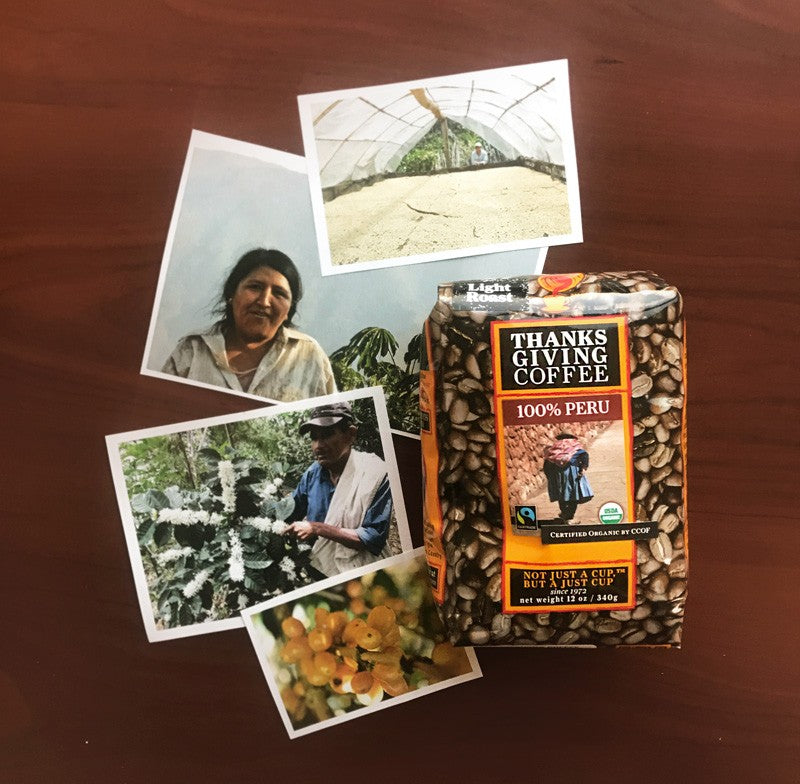
Peruvian Coffee: Latest Arrival
read more -
![Your Favorite Coffees of 2016]()
Your Favorite Coffees of 2016
We drank a LOT of coffee this year. American adults drink an average of 382 million cups of coffee every day – multiply that by the 365 days of 2016, and we have a pretty caffeinated nation. As for the year 2016, there were a couple coffees that you (our customers) especially enjoyed this past year… let’s take a look at the top five!
Top Selling (Favorite!) Coffees of 2016
SongBird French Roast
Full-bodied, smoky, and intense.
Below: A shade-grown coffee farm in Guatemala, where some of the coffee beans from this blend were grown.

Noyo Harbor French
Fudgy chocolate notes, toasty hints of caramelized pecan, and a lightly smokey, brown sugar sweetness in the finish.
Below: A coffee farmer picking berries in Uganda, at the Mirembe Kawomera co-op.

Delicious Peace, Uganda – Dark Roast
Fudgy chocolate notes, toasty hints of caramelized pecan, and a lightly smokey, brown sugar sweetness in the finish.
Below: A coffee farmer picking berries in Uganda, at the Mirembe Kawomera co-op.

Grey Whale Blend
Just a touch of vanilla, added to a blend of two brilliant medium roasts.
Below: The Grey Whale coffee package label

Mendocino Vienna
A bold, sweet blend with hints of nuts, chocolate, and caramel.
Below: A shot of downtown Mendocino, featuring the old masonic temple.

Selecting Your Coffee
We can’t help but notice that FOUR of the top five coffees on our website this year are dark roasts. Do you know how you should be selecting your coffee roast? We have a handy page on our website that teaches you a little bit more about the flavor profiles you’re drawn to…

Cheers!
Your Favorite Coffees of 2016
read more -
![My Laos Experience: Part I]()
An American Family Grows Coffee
How poor quality coffee becomes great: the time it takes
Back in 2004 I received a call from Lee Thorn, the president of the San Francisco chapter of Veterans for Peace (VPAT). Lee was a Vietnam veteran who dropped bombs on Laos and destroyed the lives and villages of innocent civilians - and forty years later he was still feeling guilty for having done so.
He said that VPAT was an organization that wanted to make amends to the Laotian people, and asked if I would help him and his group do so. He explained that while on a return visit to the Highlands of Laos he had seen the farmers growing coffee. His idea was to import their coffee to the states, have Thanksgiving Coffee roast and package it in a branded package (Jhai Coffee) and then have his veterans group sell it to other VPAT chapters around the country.
That was back in 2002, almost fifteen years ago!
I was all for it if Lee could develop the sales. We began with a single container - which we imported without even tasting it for quality. The price we paid was fully 50% higher than the world market price and that extra amount went to the farmers as a bonus for selling to us instead of their long-standing Japanese buyers. Even though the farmers were happy to get the bonus, they feared losing their long-standing buyers that didn't care about quality.
Coffee Farms in Laos
Coffee was planted in Laos by the French. They had colonized the country in the early part of the twentieth century. That part of the world was eventually known as “French Indo China” and included Vietnam and Cambodia. The French knew their coffee varieties and carefully selected the Typica variety as most suitable for the Laos climate and soil conditions.
Knowing this, I was certain that if the farmers picked fully ripe cherries and processed the pulp and seeds properly, we could get some really great coffee. We could also become the first coffee roasters in the states to offer coffee from Laos. The story would be War Veterans Giving Back to Those They Harmed.

Moving Forward with VPAT
The first container arrived and the coffee was fair. The flavor was flat, acidity was low, sugars were not developed well and it was obvious the farmers needed greater supervision in their coffee farming practices. The coffee had hints of greatness and obvious potential. But it would take training in new systems for bringing the coffee to export grade.
I decided to continue with the project although I was finding the coffee hard to sell. Lee had also over-estimated the sales potential of the other VPAT chapters. I believe this “adventure” cost Thanksgiving Coffee $50,000 in advertising, marketing, labels and brochures. By the end of that first year we had roasted the coffee into many French Roasts (irony) and had sold 50,000 Jhai Foundation Coffee Packages.
Lee hired a “Development Director” to work in Laos with the farmers to improve their agricultural practices, to harvest only red ripe cherries and to reduce imperfections to 2%. The 2003 Crop was really sweet and filled with caramel and nutty flavor tones, and I was happy!
That year my son Jonah was living in Cambodia. I asked him to make a visit to the Jhai Farmers to reinforce our commitment to the program and to the Jhai Farmers Cooperative. There he met Will Thomlinson, the VPAT Development Director that Lee had hired. Together they mapped out a plan for Thanksgiving Coffee to purchase two Containers (75,000 pounds) in the following year.
Now, with really good coffee that I knew could only get better, new and better harvesting practices, and a guarantee of sale, I and The VPAT members went into full sales and marketing mode. We sold a lot of Jhai Coffee packages. We raised a lot of money for the Laos coffee farmers. The money was given to VPAT and they transferred the money to Laos. I was more interested in the coffee side and building a new market for Laos coffee in the USA. My plan was to bring in great amounts of raw coffee as it became available over the years and to resell the coffee to other artisan roasters. It all seemed to be falling into place.
The following year, in 2005, Mr Thomlinson went rogue, selling our contracted coffee from that years crop to a Japanese company.
The project died.
The VPAT members dispersed and we at Thanksgiving Coffee got stuck holding 20,000 empty Jhai Foundation packages, 50,000 brochures, and egg on our face.
We moved on, a bit wiser and a bit poorer for the effort.
A Decade Later
Fast forward to 2014. Ten years pass and I get a call from a young man who was living in Seattle but traveling to Laos. He was so in love with the Lao people and obsessed with the fact that the children had no books in their schools. He started a program with a local coffee roaster, and called it “Coffee for Books.” One book was donated for each pound of coffee sold.
This young man wanted my advice and help to use Lao coffee beans for his project. He said he had met and made friends with coffee growers on the Bolivian Plain in Laos (The same region I had been dealing with a decade before) and was going back. Then asked if I would be his adviser, and implied that I would roast and package Lao coffee for his project, if he got the coffee exported to the USA.
I thought of the song lyric: “once burned, twice shy babe” and told him I would think about it – and get back to him before he left for Laos.
His name was Tyson Adams.
Read My Laos Experience: Part II now…
My Laos Experience: Part I
read more -
![Part III: Caring for Your Coffee Tree]()
The Beauty of Growing Coffee Trees in Your Home
 by Paul Katzeff, Co-Founder & CEO
by Paul Katzeff, Co-Founder & CEO
Coffee trees are remarkable for their ability to regenerate after severe pruning.Severe pruning is hard on the psyche. You have taken care of your tree for 15 years and it has produced an amazing amount of enjoyment as it took you through its seasonal life cycles for 12 of those years. You are no Paul Bunyan with an anxious ax. You want to save trees, not chop them down. So you are about to break your own heart and you know it. You are, however, about to rejuvenate your tree and it will love you for your bravery. Sharp pruning shears are all that you need (and faith).

“The Cut” – May 4, 2016
On May 4th, 2016 the “cut” was made about 18” from the base of the tree; it broke my heart. That’s because I harvested 511 cherries from the tree, de-pulped them, soaked the seeds in a water-bath, dried them for a week on a window sill, and in the end had about 12 ounces of green beans. We invited the mayor of Fort Bragg, chefs, a winery owner, and our staff to a once in a lifetime “cupping.” We put the roasted beans on the cupping table with coffees from Central America and were pleasantly surprised when they received the highest praise for flavors we described as bright with hints of lemon, peanut butter, and dark chocolate.

27 Days Later – June 1, 2016
Note the small fresh leaves close to the trunk. This tree has plenty of root spore and therefore it is overpowered. It has stored its regenerative powers and now those roots have much less plant structure to support. It will put on a vigorous growth spurt over the next 6 months. Notice a new trunk beginning about 8” up the main trunk. We will watch it and hopefully 2 or 3 others will emerge from the lower trunk, proving the structure for the new tree.

48 Days After “The Cut” – June 21, 2016
The tree is beginning to fill in its remaining architecture with bright new leaves and a second trunk has emerged at about 10” from the base. We are on our way. There is nowhere to go but up and out.
Stay tuned for photos of its progress over the next 6 months.Read The Full Series
Part I: The Beauty of Growing Coffee Trees in Your Home
Part II: All you Need to Know About Growing Coffee Trees At Home
Part III: Caring For Your Coffee Tree
Part III: Caring for Your Coffee Tree
read more -
![Women in Coffee: Part I]()
Women in Coffee: Part I
By Joan Katzeff, Co-Founder & Director of Operations at Thanksgiving Coffee Company
I first visited Nicaragua in the early 1990’s. The terrible years of the Iran Contra Civil War were still dominant in the memory of the people, and its effects had taken a huge toll on coffee farmers already enduring a difficult way of life.
At one of the beneficios (where coffee is processed), I watched an assembly line of women sitting on a motley collection of chairs on either side of a moving conveyor belt. Their job was to separate defective beans from those that made the grade for sale and export. It was noisy, hot and dusty, so the women also wore masks that covered their noses and mouths while working.
I left knowing that as soon as I returned home, I would figure out a way to raise money to purchase new ergonomic chairs for those women, and I did, in a gesture of solidarity. But, I knew it was just a drop in the bucket.
On another small group trip in 2012, we visited the beneficio of Soppexcca, a cooperative composed predominantly of women.
We spent some time “helping” the women transfer coffee beans from the drying patio into sacks that were in process for export. I’m not sure how helpful we were, but it was an enjoyable cultural exchange. These women performed hard physical work on a daily basis. Many of them walked miles to and from work each day if transportation wasn’t available, preparing meals for their families before and after work at the beneficio, as well as doing the rest of the work required in the home, and child rearing responsibilities, as well.
We were invited to sit in on a Board of Directors meeting composed of some of the women we’d worked with, and others from the cooperative who had founded and were operating a small store at the beneficio that sold food and sundries, and was a source of additional income for them.
While there has been progress made in the recognition and fair and equal compensation for women who work in coffee, there is still a long way to go.
Women we’ve met on buying trips to Central America and Africa live in remote towns and villages without running, potable water or electricity. Homes are rustic, often with a dozen or more family members living in one or two rooms with dirt floors. Many women don’t have access to health care, marry young, and have children soon after. During the “thin months” when coffee income is low, they and their children often go hungry. They perform much of the physical labor required to grow and harvest coffee, but have almost no influence on decisions about how family income is spent. They are typically uneducated, impoverished and disconnected from resources.
Image caption goes here
Thanksgiving Coffee began to address these issues in two ways
First, by purchasing only from cooperatives that show a willingness to eradicate this kind of gender inequity. They do this through their actions in support of remedies to eliminate food insecurity, and promoting, providing and ensuring access to training and education for women. These actions will enable women to participate as equal partners in the industry.
The second way we, as a company, have supported women in coffee is through “The Recognition of the Unpaid Work of Women.” We began this work in 2014, in Nicaragua by adding $0.10 per pound to all coffees we purchase from the Prodecoop and Soppexcca Cooperatives. They have committed to using these funds to improve the lives of women in coffee. The next post will go into detail about what has been accomplished to date.
– Joan Katzef
Joan Katzeff, Co-founder of Thanksgiving Coffee Company and Fatima Ismael, the director of Soppexcca.
these coffees pay into Our Fund that Recognizes the Unpaid Work of Women.
Stay in touch - we like to stay connected
Women in Coffee: Part I
read more -
![Natural (Dry) Processed Coffee]()
Natural (Dry) Processed Coffee
In a world getting short on water, coffee lovers should begin to get their palates ready to recognize “Dry Processed” or “Naturals” when they buy coffee.

Naturals are processed from cherry to green bean without the customary water de-pulping and subsequent water bath. In the dry process, coffee cherries are dried with their skins and pulp intact.
The cherries are placed in the sun on concrete patios or raised drying beds. The skins tighten as they dry and the pulp juices move inward into the two seed in the cherry’s interior. When the mass is totally dry and crisp, and hard as a rock, they are milled like rice, cleaned and sorted and sacked.

This process produces quite a different flavor profile from wet processed “washed coffee.” The coffees take on the hints of the fruit and at their best, notes of blueberry and strawberry prevail. There is a jammy sensitivity to the brew, lots of body and fruit aromas.
Of course, these great flavors disappear in the darker roasts. We roast naturals, both light and medium, depending on the initial intensity of the fruit flavors.
This month we are featuring two “naturals.” One is from Ethiopia and received a 91 rating from Coffee Review. The other is from one of our favorite coffee farmers in Nicaragua, Byron Corrales, and received a 94 rating.
Byron began experimenting with naturals about 6 years ago. He was the first to master the art in Nicaragua and his naturals are a tad more balanced and a bit less fruity than the Ethiopians, but the jam is there as are the sweet berry flavors.
One of my favorite blending concepts is to blend naturals with washed coffees. In fact, Paul’s Blend is just that.
– Paul Katzeff
Roastmaster Emeritus
Thanksgiving Coffee
Natural (Dry) Processed Coffee
read more -
![Our 1st #BeeBold Mendocino Advisory Committee Meeting]()
A wonderful way to begin a bee friendly county!
On Tuesday February 2nd, 2016 Thanksgiving Coffee Company hosted the first Bee Bold Mendocino Advisory Committee meeting.
The goal is to make Mendocino the first “Bee Friendly” County in California.
The meeting began with introductions all around.
Top row left to right – Paul Katzeff – CEO and Co-Founder of Thanksgiving Coffee Company, Tanya Wyldflower – Coastal Bee Keeper, Lavender Cinnamon – Community Development for Thanksgiving Coffee Company, Joan Katzeff – President and Co-Founder of Thanksgiving Coffee Company, Elmer Whaley – Community Environmental Activist, Betty Lou Whaley – Coastal Bee Keeper, Erin Arnsteen – Pollinator Friendly Gardening, Parducci Vineyards, Jess Arnsteen – Manager of Edible Ecosystem for Parducci Vineyards.
Bottom row from left to right, Tim Ward- Farmer and Director of Fundraising and Programming at the Grange Farm School, Sakina Bush – Mendocino Farmers Market Manager, Miles Gordon – Mendocino Food Policy Council, CA Food Policy Council, David Martinez – Winnemen Wintu Community Activist, Anna Marie Stenberg – Mendocino Community Activist, Cornelia Reynolds – Noyo Food Forest Executive Director,
(Not Pictured: Kate Frey – Sustainable Gardens, Co – Author of “Bee Friendly Gardens”, John Schaeffer – President and Founder Real Goods, and Michael Thiele – Gaia Bees.
After our introductions, which included a delicious local honey tasting, 3 main areas of focus were identified.
- Policy on pesticide use in Mendocino County. Address the use of Round Up and neonics.
- Education/Public Awareness of the plight of bees in Mendocino County.
- Planting and providing forage for pollinators and bees in Mendocino County.
At our next meeting we will be defining what we want to accomplish, how to do it, and the desired outcome.
John Schaffer from Real Goods will host the next Bee Bold Advisory Committee Meeting in March.
We are extremely grateful to everyone who came and is willing to work towards a better future for the bees in Mendocino County!
 "Evolution isn’t random. We all work together. The act of working together IS the evolution. Cooperation between us accelerates development of each species. The way we hold and support ourselves and each other advances our shared evolution" The Song of Increase
"Evolution isn’t random. We all work together. The act of working together IS the evolution. Cooperation between us accelerates development of each species. The way we hold and support ourselves and each other advances our shared evolution" The Song of Increase
For current news and developments of Bee Bold in Mendocino visit www.facebook.com/beeboldmendo
If you want to participate please call Lavender Cinnamon 707 964-0118 ext. 107 or email me at lavender@thanksgivingcoffee.com
Our 1st #BeeBold Mendocino Advisory Committee Meeting
read more -
![Our 1st #BeeBold Event]()
Thanksgiving Coffee Company has created Bee Bold Coffee, made a commitment to our bees, and is ready to share it with Mendocino.

In October, Ukiah Natural Foods Co-op (UNF) had their grand re-opening. After 39 years they remodeled their store, and we thought it a perfect time to introduce Bee Bold Mendocino, a local movement to save the bees. So Paul Katzeff, Co-Founder & CEO (pictured in the middle), Jonah Katzeff Vice President (below right) , and myself, Lavender Cinnamon, Community Development (below left), all went to UNF to represent Thanksgiving Coffee and share our commitment to the bees.


Bee Bold Mendocino came about when Friends Of the Earth (FOE) asked Paul for a donation. He offered instead to create a source of ongoing support for their environmental work. As the partnership began to take shape they said, “help us fund our Bee Bold project “. Paul did just that and created #Bee Bold Coffee. The project went straight to his heart, and so did the bees. (link)
When I joined Thanksgiving Coffee Company this past year, this partnership with FOE was just taking flight, and it took hold of my heart as well. It has instilled in me a deeper understanding for this delicate balance of life that we all share, and inspired me to become a steward of the bees. "Everything the bees do is about relationship with one another. The story of colony collapse is a story of how the relationships have been broken, contaminated, or subverted. It is a story of ignorance, thoughtlessness and selfishness- qualities we humans bring to far too many of our relationships, from the most personal and intimate, to the most global and insitutional" Jacqueline Freeman – The Song of Increase (link)
There are many factors at play regarding the health of the bees, however the three main reasons for the decline in the bee populations are; systemic pesticides – neonicotinoids, malnutrition, and disease/mites. The latter being a result of the first two; if your system is poisoned and not properly nourished, your susceptibility to disease is drastically increased. (link) This is what modern farming practices are doing to the health of the pollinators. If we do not learn from this now and change the way we relate to our food, we will not have healthy food left to eat. The simple truth is, do not poison the land, do not poison the water, use the plants as medicine, and grow healthy nourishing food.
As an advocate for Mendocino’s bees, Thanksgiving Coffee Company is committed to educate, gather support from our community, and create an advisory committee to pass a local ordinance that will ban these neonicotinoids (bee killing pesticides) within Mendocino County. This is why we said “yes” to be a part of Ukiah Natural’s event. This is why Thanksgiving Coffee joined the movement to help save the bee population, and this is how Bee Bold Mendocino was created. (link)
 There is no way to do this alone. We need to work with the knowledge of those who are already engaged with bees and pollinators. So, we reached out to the community to join us, and we had a wonderful response that included; 2 local bee keepers, 2 farmers, and a table set up to create your own pollinator seed balls.
There is no way to do this alone. We need to work with the knowledge of those who are already engaged with bees and pollinators. So, we reached out to the community to join us, and we had a wonderful response that included; 2 local bee keepers, 2 farmers, and a table set up to create your own pollinator seed balls.
Our beekeepers came from inland and the coast. Jonathan Hunt (on left) is part of the 4-H bee keeping program in Ukiah. He contacted me and said he would love to come participate. He brought with him his delightful enthusiasm and knowledge of bee keeping, as well as some wild crafted seeds he had collected for people to take and plant.
Elliot Brooks (on right) came with a top bar hive, he had built himself, and his entire bee keeping gear. He also brought some of the honeycomb from his hive that the bees had made for people to see, and touch the magic of bees wax. It was an absolute delight to spend the day with them.
With the help of UNF a table was set up for people to come, get their hands dirty, and help create pollinator seed balls. These pollinator balls included: clay, fertilizer and native wild seeds. They are a way to help provide the necessary diversity of food sources the bees need for optimum health. Once you made the seed balls, you could to take them home for your own yard, or throw them into an open field or empty yard.
 This idea for the pollinator seed ball table came from Tiffany at FOE when asked for suggestions on how to engage children into the wonderful world of bees. We all thought this was a great way to offer a hands on experience .
This idea for the pollinator seed ball table came from Tiffany at FOE when asked for suggestions on how to engage children into the wonderful world of bees. We all thought this was a great way to offer a hands on experience .
These seed bombs originate as a fun and friendly tactic for “guerrilla gardeners” to throw balls of seeds and fertilizer into fenced-off spaces that are otherwise neglected, or land in zoning limbo. We wanted to offer something for people to take home that can make an immediate difference. It was wonderful to see the hands of so many people making the seed balls, knowing that they will offer a great food source to our bees. Speaking of dirt and seeds, Tim Ward joined us. He works as Director of Fundraising and Programming at the Grange Farm School. Grange Farm School logoI came across their website when I was doing research on different organizations
Speaking of dirt and seeds, Tim Ward joined us. He works as Director of Fundraising and Programming at the Grange Farm School. Grange Farm School logoI came across their website when I was doing research on different organizations  in Mendocino County we would like to help and to promote their work. It was very exciting to discover this school right here in Willits dedicated to “improve agricultural literacy, food security, and ecological stewardship in our community and beyond.” I love how they teach someone to be a complete farmer, taking into consideration all of the skills one needs to be a sustainable food producer. (link)
in Mendocino County we would like to help and to promote their work. It was very exciting to discover this school right here in Willits dedicated to “improve agricultural literacy, food security, and ecological stewardship in our community and beyond.” I love how they teach someone to be a complete farmer, taking into consideration all of the skills one needs to be a sustainable food producer. (link)
The School began in 2014 and operates on 12 acres of the Ridgewood Ranch, and is supported by a wide network across the region, state, nation, and world!
The Farm School recognizes the immediate need to train the next generation of farmers to support themselves, with a focus on production and distribution methods that emphasize long-term environmental responsibility.
The School builds on the rich agricultural heritage of Mendocino County and the Grange in its diverse and holistic educational programming for farmers, aspiring farmers, and youth. The Grange has been dedicated to serving the cooperative farming movement since 1867! And yes, the Grange Farm School cares for our bees, and cooperation, which is an amazing skill the bees teach.
We would be remiss if we did not have representation from the wineries. Mendocino County has over 17,000 acres of vineyards. It is essential that we help educate the vineyards and those who buy wine to the importance of the bees, even if grapes themselves are wind pollinated. Today 25% of Mendocino vineyards are growing certified organic grapes, with the Frey family’s winery being the first Organic winery in Mendocino County, and the Nation, back in 1980. If your wine is not organic, please ask if the winery uses neonicotinoids on the grapes. Help educate the wine industry on how to help keep our pollinators alive.
 We had the pleasure of Mendocino County’s oldest winery joining us, Parducci Wine Cellars (Certified organic). They understand the value and benefit of the bees. Jess Arnsteen came with Erin Ravin to share their organic, pollinator friendly practices. Parducci was the first carbon neutral winery in the country (2007) and in recognition of their continuing dedication to social responsibility and environmentally sound practices, they received California’s highest environmental award, the Governor’s Environmental and Economic Leadership Award. They are also leaders in water reclamation and water-conservation program.
We had the pleasure of Mendocino County’s oldest winery joining us, Parducci Wine Cellars (Certified organic). They understand the value and benefit of the bees. Jess Arnsteen came with Erin Ravin to share their organic, pollinator friendly practices. Parducci was the first carbon neutral winery in the country (2007) and in recognition of their continuing dedication to social responsibility and environmentally sound practices, they received California’s highest environmental award, the Governor’s Environmental and Economic Leadership Award. They are also leaders in water reclamation and water-conservation program.
Jess works as Manager of Edible Ecosystems where he tends his flock of sheep, and a 15-acre garden that feeds over 60 employees from Parducci . Jess is very involved with the chain of pollinator to food, he understands the importance of our pollinators and came with arms full of pollinator food/flowers to share with us. (link)
The entire event was a true pleasure, from the collaboration with Ukiah Natural Foods Co-op, who have been one of our loyal customers for over 38 years. It just felt like home.
 Pictured here is Mary Anne Cox, Ukiah Natural’s Marketing Manager (on right) she was a real treasure to work with, and Lori Rosenburg (on left) Ukiah Natural’s General Manager was a wonderful host. We were graciously welcomed by the entire crew from UNF.
Pictured here is Mary Anne Cox, Ukiah Natural’s Marketing Manager (on right) she was a real treasure to work with, and Lori Rosenburg (on left) Ukiah Natural’s General Manager was a wonderful host. We were graciously welcomed by the entire crew from UNF.
“Ukiah Natural Foods Co-op was incorporated in 1976. By serving the needs of our diverse membership, we have grown through the years. Our current store has more than 6,800 square feet of space, and we serve over a thousand shoppers each day.”
It seemed only natural to introduce our #Bee Bold Coffee at their re-opening event, as we work together towards the health of our community and our bees in Mendocino. If you are in Ukiah go on in, say hi, and pick up some of the #Bee Bold Coffee in their store.
 Our most recent and exciting news since this event, is that Noyo Food Forest has joined us as the fiscal sponsor for Bee Bold Mendocino.
Our most recent and exciting news since this event, is that Noyo Food Forest has joined us as the fiscal sponsor for Bee Bold Mendocino.
The Noyo Food Forest is a non-profit that grows community, as they say “one garden at a time”. They teach the value, and satisfaction of growing one’s own food, while giving support to local food sovereignty and independence. We are extremely grateful to Noyo Food Forest for all of their wonderful work. (link).
 I leave you with one more quote from The Song of Increase.
I leave you with one more quote from The Song of Increase.
“Evolution isn’t random. We all work together. The act of working together IS the evolution. Cooperation between us accelerates development of each species. The way we hold and support ourselves and each other advances our shared evolution”
For current news and developments of Bee Bold in Mendocino you can visit www.facebook.com/beeboldmendo
If you want to participate please call Lavender Cinnamon 707 964-0118 ext. 107 or email me at lavender@thanksgivingcoffee.com
Our 1st #BeeBold Event
read more -
![Origin Trip: Nicaragua 2015]()
Origin Trip: Nicaragua 2015
This coffee buying trip to Nicaragua marks the 30th year Thanksgiving Coffee has traveled to this beautiful country. It is also the first year that Thanksgiving Coffee is sending staff without the guidance and counseling of CEO Co-Founder Paul Katzeff.
The trip represents the “passing of the torch” to a new generation. It’s a generation that grew up with coffee as a medium for carrying the message of the people, their craftsmanship, and their hope for a better life through coffee cultivation.
Jacob and Jonah carried The Company message to the cooperatives that our mission, and the value we place on long term relationships, bridges generations. We are in this together, and prosperity for all is the common thread we value most.
– Paul Katzeff
Adventures at Origin: Nicaragua
Jacob Long, Nicholas Hoskyns, and I (Jonah Katzeff) traveled together from March 23rd-27th. We visited first and second level coffee cooperatives that produce approximately 25% of our annual green coffee purchases. We cupped and selected our Nicaraguan coffees for 2015, met with cooperative leaders and farmers, and visited beautiful coffee farms.
We were received warmly everywhere. I am so grateful to the hundreds of hands that touch coffee, from the time it is picked to when it is exported. Our 2015 Nicaraguan coffees will be exceptional. The new harvest will be available starting in late May.


DAY ONE
Solcafe and Byron Corrales’ farm visit
• We cupped the Solidaridad washed and dry-processed (natural) micro lots, along with Byron’s washed and dry-processed coffees in the morning at Solcafe- the dry mill that processes and exports coffees from first level cooperatives.
• Cecocafen is the second level cooperative that owns the dry mill and is the exporter for many first level cooperatives.
• They have constructed a new cupping lab that is much more spacious than the older one. It was interesting to see on this visit that three cupping labs had been moved to new locations.
• We then traveled to Byron’s farm for a delicious lunch consisting of beets, carrots, squash, potatoes, cheese, tortillas, gallo pinto (rice and beans), and mini chicken tamales.
• After lunch, Jacob and I toured Byron’s two farms with Byron and his daughter, Sara.
• Byron showed us the tree where Paul, Byron, and Arnulfo (Byron’s grandfather) first agreed to work together 22 years ago (in the photo at left).
• We learned about some of the biodynamic techniques Byron is applying to the land. Byron expressed that the 3 most important factors resulting in great coffee are: the producer/farmer, the quality of the soil, and the skill of the roaster.
• We also learned about some of the negative effects resulting from climate change on his coffee trees – fruit not ripening at all, or not ripening fully, and trees flowering now [end of March] when they typically flower in May.

• Byron is taking action now by replacing older trees with ones that are more resistant to climate change. He is also planting more shade trees to protect the coffee trees from the sun.
• He expressed concern that if changes are not made now, there may be a lot less coffee in the future.
• We visited a small grove of a variety of pine trees (7 total) that Byron smuggled back from Brazil. There are no other varieties of this pine in Nicaragua.
• We then returned to Byron’s farm called Finca de Los Pinos and said our goodbyes to Byron’s parents, and returned to Matagalpa for the evening.
• We enjoyed pizza with the Corrales family in Matagalpa!

The green coffee sourcing team:
Nicholas (on right) is the Managing Director of Etico. He organized our visit and traveled with us throughout the week. Nicholas was born in England, but Nicaragua is his adopted home after spending almost 25 years there! Etico imports our coffees from Nicaragua as well as green coffees from Guatemala, Mexico, Rwanda, and Uganda.
Jacob (second from right) is the Director of Coffee Control and Roastmaster at Thanksgiving Coffee. He is responsible for developing the roast profiles of all our single origins, blends, and decafs. He approves all the green coffees we purchase and ensures that the coffee roasted at Thanksgiving is consistent roast after roast.
Jonah (on left) works in Business Development and as an Account Manager. He serves in a variety of roles that include green coffee sourcing, managing the San Francisco Bay Area accounts, and special projects, as assigned by Senior Management.
Origin Trip: Nicaragua 2015
read more
